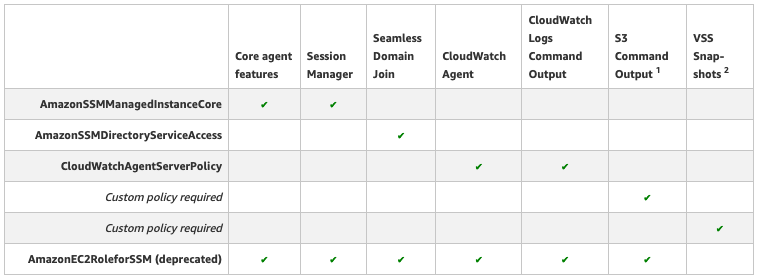AWS Cloud Operations Blog
Tag: AWS IAM
Enforcing enterprise-wide preventive controls with AWS Organizations
When managing multiple AWS accounts in AWS Organizations organization, it’s important to implement central access controls that govern both identities and resources. These controls are essential for ensuring security, compliance, and scalability across your environment. AWS Organizations service control policies (SCPs), resource control policies (RCPs), and declarative policies enable you to centrally configure and manage […]
Enhance Amazon EKS Containerized Application Resilience with AWS Resilience Hub
Building and managing resilient, micro-service based Containerized applications in a distributed environment is hard; maintaining and operating them is even harder. Even though containerized applications running on Amazon Elastic Kubernetes Service (Amazon EKS) take advantage of the performance, scale, reliability, and availability of AWS infrastructure which, we need to understand that failures will occur and […]
Deploying Custom AWS Config Rules in an AWS Organization Environment
In this post, we will show how you can deploy AWS Config custom rules across accounts in your organization, leveraging the Rules Development Kit (RDK), an open source development kit designed to support intuitive and efficient “Compliance-as-Code” workflows. With AWS Config custom rules, you can define custom logic for the desired configuration state of your […]
How Thomson Reuters used Amazon CloudWatch to improve availability and operational efficiency of Directory Services
Thomson Reuters Corporation (TR) is a Canadian multinational media company that provides critical online and print information, know-how, decision making tools, software, and services for the legal industry. TR’s Tax and Accounting business serves law firms, tax and accounting firms, global trade organizations, educational institutions, and more. Thomson Reuters operates in more than 100 countries […]
Visualize data on Snowflake usage and credits using Amazon Managed Grafana
In August 2021, AWS announced Amazon Managed Grafana as generally available (GA), a fully-managed service that’s developed together with Grafana Labs and based on open source Grafana. Enhanced with enterprise capabilities, Amazon Managed Grafana makes it easier to visualize and analyze operational data at scale. Amazon Managed Grafana is a fully-managed and secure data visualization service that […]
Managing AWS account lifecycle in AWS Control Tower using the Account Close API
AWS Control Tower provides the easiest way for you to set up and govern your AWS environment following prescriptive AWS best practices managed on your behalf. AWS Control Tower orchestrates multiple AWS services (AWS Organizations, AWS CloudFormation StackSets, Amazon Simple Storage Service (Amazon S3), AWS Single Sign-On, AWS Config, AWS CloudTrail) to build a landing […]
How to implement a read-only service control policy (SCP) for accounts in AWS Organizations
Customers who manage multiple AWS accounts in AWS Organizations can use service control policies (SCPs) to centrally manage permissions in their environment. SCPs can be applied to an organization unit (OU), account, or entire organization to restrict the maximum permissions that can be applied in the scoped AWS accounts. In this post, we are going to explore the use of SCPs to restrict an AWS account to read-only access.
Four ways to retrieve any AWS service property using AWS CloudFormation (Part 1 of 3)
Many of you have experience using AWS CloudFormation to automate your application deployments. As you probably know, the service supports around 600 types of resources. When you optimize your templates, you might have discovered that each of those resource types encapsulates native AWS SDK API calls to create or update each resource’s state or configuration. You […]
Enabling AWS IAM Access Analyzer on AWS Control Tower accounts
Many of the customers we work with look for ways to manage compliance and gain additional insights across their AWS multi-account organization from a central location. We often begin the discussion with AWS Control Tower, as it offers the easiest way to set up and govern a multi-account AWS environment. AWS Control Tower is an […]
Applying managed instance policy best practices
Since AWS Systems Manager was launched, the service has continued to add new features for customers to use. Many features are enabled by granting your Amazon EC2 instances and on-premises servers access to Systems Manager using an AWS Identity and Access Management (IAM) role with the necessary permissions. To provide customers more flexible, fine-grained permission […]









